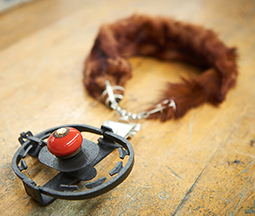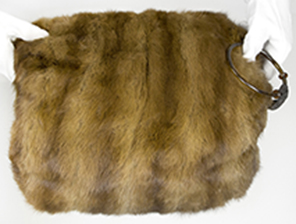![UW-La Crosse Associate Professor of Art Brad Nichols created work for the [art]ifact exhibit, along with 15 other community artists. UWL student Ariel Reker and classmates presented the original project idea for [art]ifact as a capstone project in an Introduction to Public and Policy History course in the fall 2013. Since then, several classes moved the project forward from artifact analysis and research to curatorial work and programming. The project was made possible through a partnership among the Pump House Regional Arts Center, La Crosse County Historical Society, and UWL’s History Department.](https://www.wisconsin.edu/for-wisconsin/wp-content/uploads/sites/230/2016/04/UWL_art-i-fact_2016_Art_Professor_Brad_Nichols_001-e1461861714569-1024x569.jpg)
UW-La Crosse Associate Professor of Art Brad Nichols created work for the [art]ifact exhibit, along with 15 other community artists. UWL student Ariel Reker and classmates presented the original project idea for [art]ifact as a capstone project in an Introduction to Public and Policy History course in the fall 2013. Since then, several classes moved the project forward from artifact analysis and research to curatorial work and programming. The project was made possible through a partnership among the Pump House Regional Arts Center, La Crosse County Historical Society, and UWL’s History Department.
But as Nichols, a UWL associate professor of art, learned more about the history of the object — the story of social status wrapped up in this consumer product — his mind filled with ideas of how to turn the historic artifact into art.
Nichols’ artistic interpretation of the mink muff was part of the [art]ifact exhibit that ran in La Crosse’s Pump House Regional Art Center this spring. The exhibit showcased 15 local artifacts from the La Crosse County Historical Society collection and the corresponding new, original artwork inspired by the objects.
UWL student Ariel Reker and classmates presented the original project idea for [art]ifact as a capstone project in Assistant Professor of History Ariel Beaujot’s Introduction to Public and Policy History course in the fall semester of 2013. Since then, several of Beaujot’s classes moved the project forward from artifact analysis and research to curatorial work and programming.
The project was made possible through a partnership among the Pump House Regional Arts Center, La Crosse County Historical Society and UWL’s History Department.
Reker says over the last three years she’s grown in ways she didn’t expect.
“’Business casual’ no longer frightens me and leading a meeting with people who possess four times the experience I have is now something I enjoy,” she says. “These are small examples, but perhaps the most important takeaway for me will be learning how to navigate the wonderful, stressful and educational process of developing a great idea and watching it grow into a full-fledged project.”

Brad Nichols, UWL associate professor of art, created this necklace — a mink with a live trap as the pendant. The piece was inspired by an artifact from the La Crosse County Historical Society collection.
The story of the muff. Nichols was initially at a loss for how to use the mink muff for artistic inspiration until Reker handed him a report explaining the object’s historic significance.
“One reason I went in the direction I did is because of her research,” he explains.
The muff came from the Lutz Fur Store in downtown La Crosse. It was a sign of social status. When women wore a muff, their hands were occupied, so it put them in a position to have others open doors for them.
It got Nichols thinking about material goods and their socially-constructed meaning. A diamond, for instance, is a symbol of money, power and love — yet it has also fueled civil conflicts and horrible working conditions in other parts of the world. Nichols piece displayed at [art]ifact begged the question of what true value or meaning such a consumer product has.
Nichols’ piece is a necklace made out of a mink shawl with a small live trap as the pendant. The mink — as it is wrapped around the neck — is either caught in or avoiding the trap. Yet, it wears a muzzle made of real silver. The piece sends conflicting messages about whether a high-society material good means status or entrapment. Just as the mink is caught in the trap, these ideas of status are locked up inside the piece, he explains.
A seemingly complex artistic message, Nichols says he doesn’t expect people to come away with the same story. That’s the beauty of the visual arts, he adds. “Everyone will interpret it in their own way.”
Get more information about the unique cooperative art project at: www.art-ifact.org.

